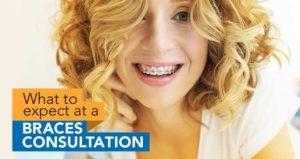A Biased View of Legacy Orthodontics
A Biased View of Legacy Orthodontics
Blog Article
Legacy Orthodontics Fundamentals Explained
Table of ContentsLegacy Orthodontics - QuestionsEverything about Legacy OrthodonticsLegacy Orthodontics Fundamentals ExplainedThe Best Strategy To Use For Legacy OrthodonticsThe Legacy Orthodontics PDFs
At Advanced Orthodontics, we give people with a alternative therapy experience. Additionally, we provide flexible treatment routines, versatile payment choices and a fun, pleasurable experience. leesburg clear braces. Phone call ( 480) 357-4900 today for additional information and timetable an appointment.An orthodontist is a dental expert trained to detect, avoid, and treat teeth and jaw abnormalities. They fix existing conditions and are trained to recognize issues that might develop in the future. Orthodontists deal with people of every ages, from kids to adults. People often link a perfect smile with excellent wellness.
Malocclusion, or misaligned teeth, can result in oral problems, including dental caries, gum tissue illness, and challenging or agonizing chewing. However not everyone is birthed with straight teeth. If you have a poor bite or large spaces in between your teeth, you may intend to speak with a dentist specializing in orthodontic care.
The Buzz on Legacy Orthodontics
( Photo Credit Rating: DigitalVision/Getty Images) Orthodontists use taken care of and removable oral tools, like braces, retainers, and bands, to alter the setting of teeth in your mouth. Orthodontic therapy is for oral abnormalities, including: Uneven teethBite troubles, like an overbite or an underbiteCrowded teeth or teeth that are too far apartJaw misalignmentThe objective of orthodontic therapy is to enhance your bite.
A healthy and balanced bite ensures you can consume, eat, and talk effectively. While you could consider orthodontists as primarily for kids or young adults who need braces, they can correct dental troubles at any type of age. Orthodontists attend university, dental institution, and orthodontic school. After graduation, they spend 2 or 3 years in an orthodontic residency program.
All orthodontists are dental professionals, yet not all dentists are orthodontists. Orthodontic residency programs provide extensive, concentrated instruction for oral professionals. They focus on two locations: Just how to effectively and securely move teeth Exactly how to correctly direct growth in the teeth, jaw, and faceOnce an orthodontist has actually completed training, they have the alternative to become board licensed.
Our Legacy Orthodontics PDFs
Imbalance, or malocclusion, is the most typical reason individuals see an orthodontist. It is hereditary and is the outcome of dimension distinctions in between the upper and lower jaw or in between the jaw and teeth. Malocclusion results in tooth congestion, an irregular jaw, or irregular bite patterns. Malocclusion is typically treated with: Your orthodontist connects steel, ceramic, or plastic square bonds to your teeth.
Some people require a headgear to aid move teeth right into line with stress from outside the mouth. A retainer is a personalized tool that maintains your teeth in place.
They're most frequently used on youngsters. They can produce extra area in the mouth without needing to draw teeth. If you have a major underbite or overbite, you could require orthognathic surgical treatment (additionally called orthodontic surgery) to lengthen or reduce your jaw. Orthodontists make use of cables, surgical screws, or plates to support your jaw bone.
You may need to see an orthodontist if you have: Crowding or otherwise sufficient space for every one of your teethOverbite, when your upper teeth come over your bottom teethUnderbite, when your bottom teeth are as well much forwardSpacing or problems with gapsCrossbite, which is when your top teeth fit behind your bottom teeth when your mouth is closedOpen bite or an upright gap in between your front base and top teethMisplaced midline, when the facility of your base and top teeth do not line up Dealing with an oral malocclusion can: Make attacking, eating, and speaking easierImprove the balance of our face and your general appearanceEase discomfort from temporomandibular joint problemsSeparate your teeth and make them easier to clean up, helping avoid dental cavity or cavities It's usually a dental expert that initially notices misaligned teeth during a routine examination.
Legacy Orthodontics Can Be Fun For Anyone

During your first orthodontic examination, you'll likely have: An oral examPhotos taken of your face and smileDental X-raysPanoramic (360 degree) X-rays of your face and headImpressions to create mold and mildews of your teethThese examinations will certainly help your orthodontist understand just how to wage your treatment. invisalign. An orthodontist is a dentist that's had training to treat your teeth and jaw
Orthodontists might execute surgery, exams,X-rays,and even more to help you achieve a more comfy, healthier smile. An orthodontist is focused on your bite, so something like a chipped tooth would be managed by a dental expert. Orthodontists are dental professionals but not all dentists are orthodontists. Orthodontists are focused on your bite, or the way your teeth fit together, and the straightness of your teeth.
Ever before questioned exactly how celebrities constantly seem to have flawlessly lined up teeth? The response typically depends on the skilled hands of an orthodontist. What precisely does an orthodontist do? Orthodontists are dental professionals who concentrate on correcting irregularities in the teeth and jaws. Their proficiency surpasses just creating a stunning smile; it reaches improving your overall dental wellness and function.
The Best Guide To Legacy Orthodontics

While dental braces are one of the most frequently read this article recognized orthodontic therapy, orthodontists have a diverse toolkit at their disposal. The certain method chosen depends on the severity of the case, the person's age, and private choices. These tried-and-true braces utilize a system of brackets bonded to the teeth and attached by cords.
Clear aligners, like Invisalign, are a popular choice for clients looking for an extra discreet treatment choice. These removable trays are tailor-made to considerably shift the teeth's position. Headgear may be utilized along with dental braces or aligners to use extra targeted pressures, specifically for remedying jaw inconsistencies. In cases of narrow jaws, palatal expanders can be utilized to produce space for proper tooth alignment.
Report this page